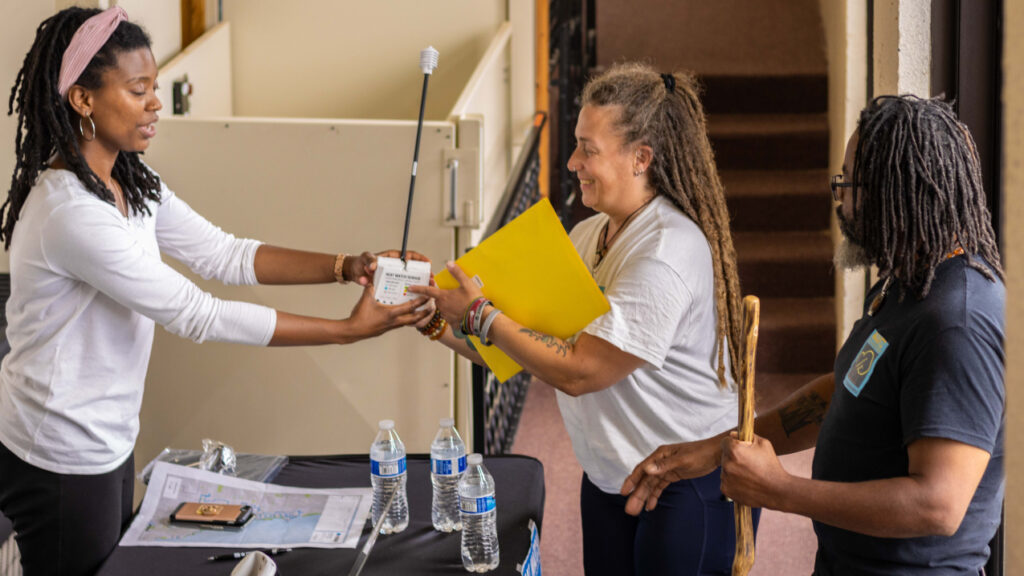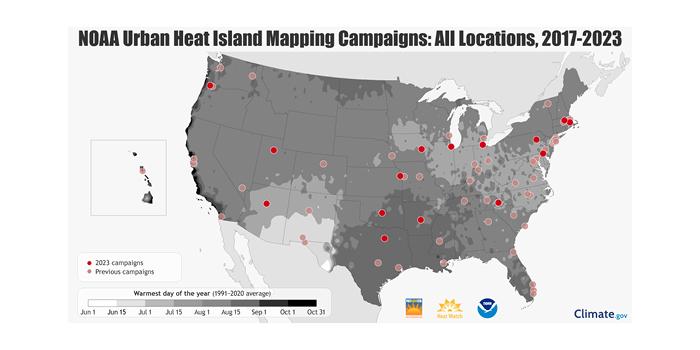In partnership with CAPA Strategies, NOAA’s National Integrated Heat Health Information System (NIHHIS) has begun accepting applications from organizations interested in participating in the 2024 Urban Heat Island (UHI) mapping campaign program.
NOAA will provide funding to CAPA Strategies to support community campaigns in 2024. Applications are due by 5:00pm EDT on Wednesday, January 31, 2024. Applicants will be notified of the outcome by mid-March.
In the eighth year of the program, NIHHIS and CAPA Strategies will support community science campaigns in cities and counties across the USA to map the hottest neighborhoods and learn where action is needed to protect their communities. In 2024, NIHHIS will be partnering with additional agencies on this effort, including the Department of Health and Human Services (HHS) and the Department of Housing and Urban Development (HUD).
“Climate change is increasing the intensity and frequency of heatwaves in our country,” said Sarah Kapnick PhD, NOAA chief scientist. “NOAA’s Urban Heat Island mapping program is a fantastic way for communities to use science to identify the hottest neighborhoods and tailor solutions including planting more trees, increasing access to cooling resources, and directing outreach with health tips during heatwaves.”
The UHI mapping campaigns are run in the summer by a lead organization, such as a local university, non-profit group or local government, in each community. The campaigns rely on community scientist volunteers to drive around the city using sensors attached to cars to collect data on temperature, humidity, time and GPS location. This data is used to create maps that provide a detailed analysis of the distribution of heat in the morning, afternoon and evening. The maps and reports reveal temperature differences across neighborhoods and also enable communities to understand how factors such as lack of green space or concentrated areas of pavement can contribute to hotter neighborhoods.

The UHI mapping program is part of the Biden Administration’s Justice40 initiative, and applicants will be asked to describe how their work will further environmental justice initiatives in their community. During the campaign, organizers will track and report on the allocation of benefits to underserved communities.
These public campaigns are intended to raise awareness in each community of the growing health issue of urban heat islands and have spurred actions to address extreme heat. Previous campaigns have led to additional shading structures at bus stops in Las Vegas and a new program to educate residents about community-driven solutions in Boston; and they have informed the King County, Washington, extreme heat mitigation strategy and the Richmond, Indiana, heat management plan.
After mapping occurs, communities remain part of the UHI community of practice which enables campaign leaders to connect with other communities and share solutions.
For the past seven summers, more than 80 cities and counties across the USA have participated in UHI mapping campaigns. In total, 18 US communities participated in the 2023 campaign, which finished data collection in September. Mapping reports from each community will be released on a rolling basis and can be viewed on heat.gov.
For more key climate measurement updates from the meteorological technology industry, click here.



